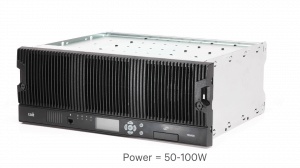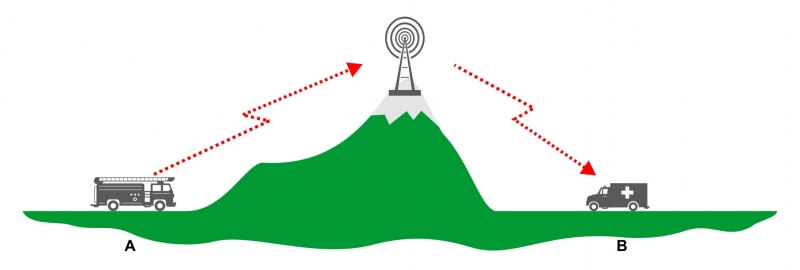Basic Radio Awareness
Communications Systems
How do repeater systems work?
As previously discussed, repeaters help with the problem of line of sight in conventional communications. If two radios want to communicate with a hilltop in the way, then there is no line of sight. One way to overcome this is placing a repeater (or base station) at the top of the hill. One radio communicates up to the repeater, this is called uplink, and then the repeater repeats that transmission down to the radio on the other side of the hill, this is called downlink.
However, repeaters are used even when there are no hills in the way as they are excellent for extending range. A repeater is an extremely powerful radio. Portable radios work in five watts, mobile radios work in 25 watts or more, and repeaters are even more powerful radios in the 50 to 100 watt range.

Repeaters are generally in fixed positions at particular geographical locations. This can sometimes be in their own special hut or in some type of enclosure. They have a cable connection to antenna systems, which are either mounted on steel towers or simply fixed to the top of the building.
Mobile radios and portables can take advantage of the greater power available in the larger size of the antennas. A collection of repeaters connected together provide mobile portable radio users coverage over an extremely wide area, thus extending the range of communications.
 Radio Academy
Radio Academy






